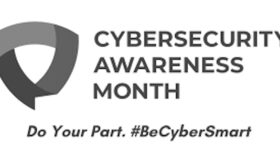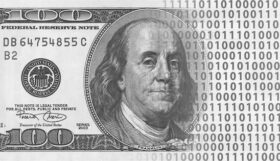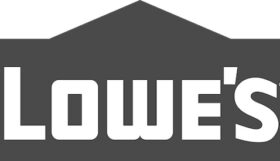SketchFactor; Is This A Racist App?
 Last August an app was launched that has raised some serious questions about racism and technology. The app is named SketchFactor and its purpose is to alert the user of dangerous neighborhoods in cities they maybe unfamiliar with. Does this make the developers of SketchFactor racist?
Last August an app was launched that has raised some serious questions about racism and technology. The app is named SketchFactor and its purpose is to alert the user of dangerous neighborhoods in cities they maybe unfamiliar with. Does this make the developers of SketchFactor racist?
SketchFactor works similar to the Yelp app which uses the personal views of customers to rate restaurants and other services. But the suspicion is that SketchFactor is using words like ‘dangerous’ and ‘drugs’ to hide racism. That these so called “dog whistle” words communicate and promote the idea that some areas are dangerous based solely on the skin color of the people that live there. But lets be real; is that not occassionally true. Are there not neighborhoods, even whole counties where blacks are not welcome? Ask anybody in the south. Would that be a sketchy neighborhood to a black person? What about white wealthy neighborhoods where a black person is viewed with suspicion? Ask Jaime Foxx.
SketchFactor was created by Allison McGuire and Daniel Herrington. Yeah, they are white. The creators developed the app to allows user to rate a neighborhood’s “relative sketchiness” on a five-point scale. The app also uses publicly available data to complete the sketchiness rankings.
Anyone who moves to a new city would want to know what areas to avoid. High crime areas are first on the list of course. What about areas where there is no bus or taxi service? Areas of the city where there are high rates of prostitution? If you took a job in the downtown area of a major city wouldn’t you want to know that the neighborhood changes after dark? There are two ways to learn this information; someone tells you or you learn it first hand and hopefully not the hard way. And that is where SketchFactor steps in and delivers this information to your mobile device or computer. Not smelling any racism yet.
But the question has to be what is the definition of “sketchy?” There are a lot of words that can be used in place of sketchy when describing a less than desirable neighborhood. You could use dicey, suspect, shady, iffy, whatever. The Team SketchFactor blog, defines sketchy as “an event that’s uncomfortable and out of the ordinary.” Ok, but an event that is uncomfortable and out of the ordinary depends on the neighborhood and its inhabitants. For example; it is not out of the ordinary to see homeless people in San Francisco. It would be in Leesburg, VA.
But what if the phrase was used to describe a minority neighborhood or a singular experience in a neighborhood? What is the SketchFactor of a white person who finds himself in a black or minority neighborhood compared to the feeling of a black person who feels the eyes of a white community on him when he finds himself there? What about being pulled over in a rich white neighborhood in the middle of the night just for being black? Now we can talk racism.
SketchFactor has some powerful reverberations that I am not sure that the creators took into consideration. First of all how has the app been marketed? Who is it directed toward? I have a feeling that there are a lot of fearful travelers who will use the app to make sure they don’t book a hotel that is too close to a “sketchy neighborhood.” The Parc 55 Hotel in San Francisco is just a block or two from Union Square and also just a block or two from the Tenderloin, one of the San Francisco’s “sketchiest” neighborhoods. So how long before businesses start to look upon this app as a danger to their well being?
Another factor that has to be realized is real estate value. There are some homeowner(s) that are not going to be happy with the SketchFactor score of their neighborhood and react legally. There are lawsuits coming when you consider the use of the app and what it can do to property values and business especially if a few trolls decide to blackball the neighborhood.
The creators of the app have made a point of making sure that the users understand that they are not racist. You can find the declaration on the launch page of the app. But that tells me that they understand that the app has some users who will indeed use the app to unfairly downgrade a neighborhood. They acknowledge it openly.
To prevent this the app uses an upvote-downvote rating system. According to the interview with Huffington Post McGuire believes that system will keep “super-racist” posts out of the system. Ms. McGuire please explain “super-racist” compared to regular-racist?”
McGuire also noted that users can search for crime-related ratings or can search for “bizarre discovery,” “catcalling” or “racial profiling.” The creators of the app stated that they use use publicly available data to rate neighborhoods. But how does the opinion of users compare to the real data collected by local police or other organizations? They did say they use this information in their rankings didn’t they? So can the user of the app make comparisons of statistical data compared to user posts?
McGuire asked the question;”Wouldn’t it be useful to understand where stop and frisks are actually happening?” She added “My mission in life is to give a voice to the voiceless. SketchFactor gives a voice to anyone with a smartphone.”
In her defense McGuire also clarified in an interview with Crain’s New York that people of all races, not just white people, can download the app. And that makes sense. McGuire admits that she does not encounter many sketchy neighborhoods even though she lives in New York. The affluent West Village neighborhood of Manhattan to be exact.
“I live in New York now. So almost nothing’s sketchy to me anymore.” Really? I would ask Ms. McGuire to talk about the feeling she gets when she walks out the door and sees a “sketchy” black man standing on the corner? And how would the black man feel? Would he use the “SketchFactor” app to point out that the white people of West Village are suspicious of black people in the neighborhood?






